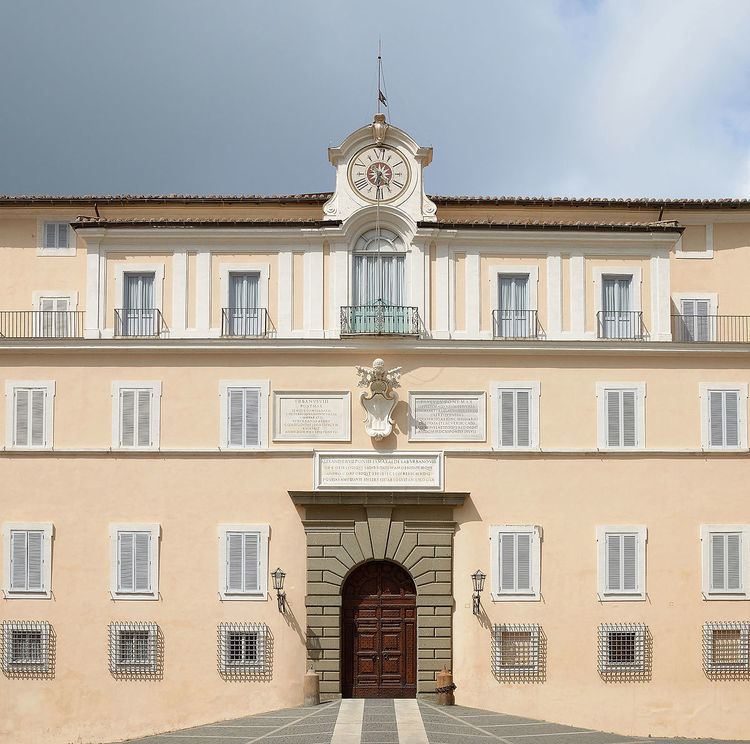Phone +39 06 6986 3111 Architect Carlo Maderno | Function Palace | |
 | ||
Address Piazza della Libertà, 00120 Castel Gandolfo RM, Italy Hours Open today · 9AM–1PMWednesday9AM–1PMThursday9AM–1PMFriday9AM–1PMSaturday9AM–4:30PMSundayClosedMonday9AM–1PMTuesday9AM–1PMSuggest an edit Similar Lake Albano, Apostolic Palace, Mater Ecclesiae Monastery, Gardens of Vatican City, Ville pontificie | ||
The Papal Palace of Castel Gandolfo, or the Apostolic Palace of Castel Gandolfo from its Italian name Palazzo Apostolico di Castel Gandolfo, is a 17th-century 135-acre papal palace in the city of Castel Gandolfo, Italy. Now a museum, it had served for centuries as a summer residence and vacation retreat for the pope, the leader of the Catholic Church. Although situated within Castel Gandolfo, the residence was afforded extraterritorial status as one of the properties of the Holy See and was not under the jurisdiction of Castel Gandolfo or Italy. The building ceased to be a papal palace in October 2016.
History
“The oldest parts of the castle date back to the 13th century,” said Saverio Petrillo, whose title is director of the Papal villas. “It was acquired by the Vatican in 1596 when the Savelli family, who owned it, were unable to pay a debt to the Papacy.”
The gardens occupy the site of a residence of the Roman Emperor Domitian. The palace was designed by Swiss-Italian architect Carlo Maderno for Pope Urban VIII. Popes have used the properties as a summer residence and vacation retreat, except for the years between 1870 and 1929 when the popes, in dispute with Italy over territorial claims, did not leave Vatican City. Pope Pius XI had the facilities modernized and began using the retreat again in 1934. In accordance with the Lateran Treaty of 1929, the palace and the adjoining Villa Barberini added to the complex by Pope Pius XI are extraterritorial properties of the Holy See.
During World War II, an unknown number of Jewish refugees took shelter at the palace under the protection of the Holy See and many people used the site as a refuge from Allied bombing raids in 1944, though more than 500 people died in one such attack.
Pope Pius XII died at the palace in 1958 as did Pope Paul VI in 1978.
Pope John Paul II had a swimming pool built at the Palace, which was criticized by some. Paparazzi used the opportunity to take photos of him.
Pope Benedict XVI flew to the palace at the conclusion of his papacy on 28 February 2013 and spent several weeks there before returning to Vatican City on 2 May.
On 23 March 2013, Pope Francis visited Benedict XVI at the palace for lunch. On 7 December 2013, Pope Francis named Osvaldo Gianoli as the Director of the Pontifical Villas of Castel Gandolfo. In March 2014, the Vatican opened the Barberini Gardens to paid visitors on guided tours during morning hours every day but Sunday.
On October 21, 2016, it was opened to the public for viewing. When asked by Reuters journalist Philip Pullella if the building would once again become a papal apartment, Castel Gandolfo mayor Milvia Monachesi stated that "the fact that the palace is now a museum will make a reversal in the future difficult."
